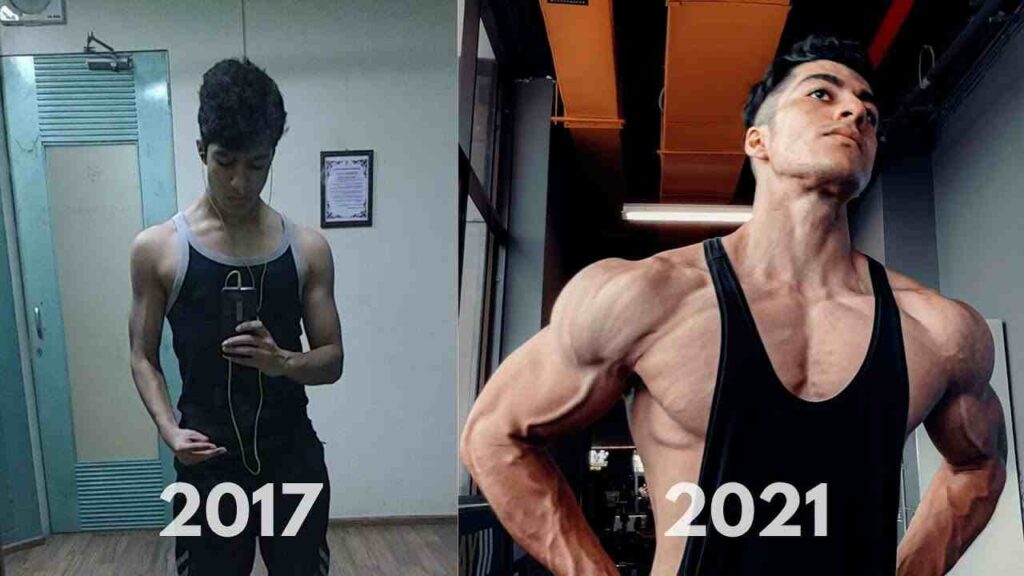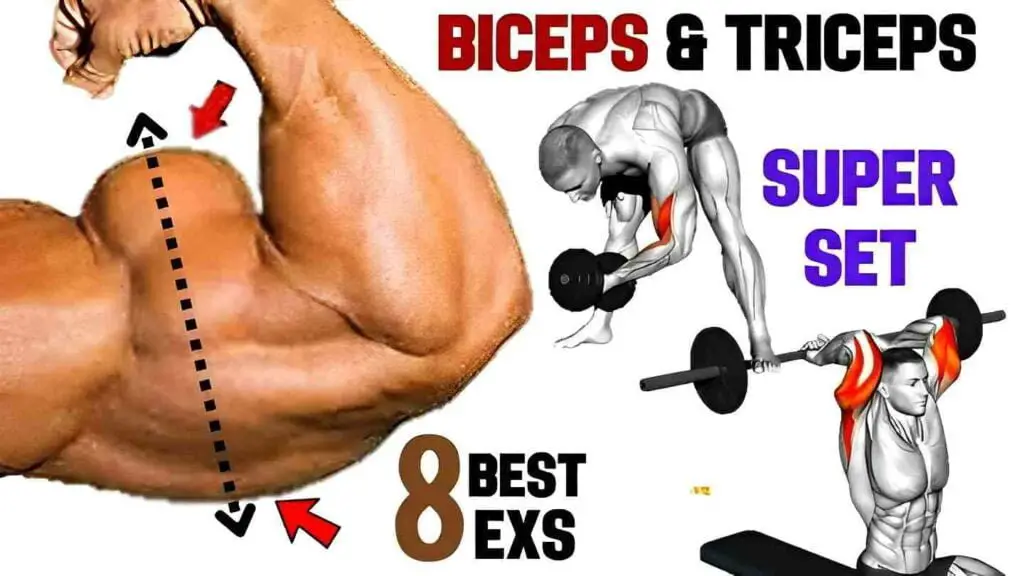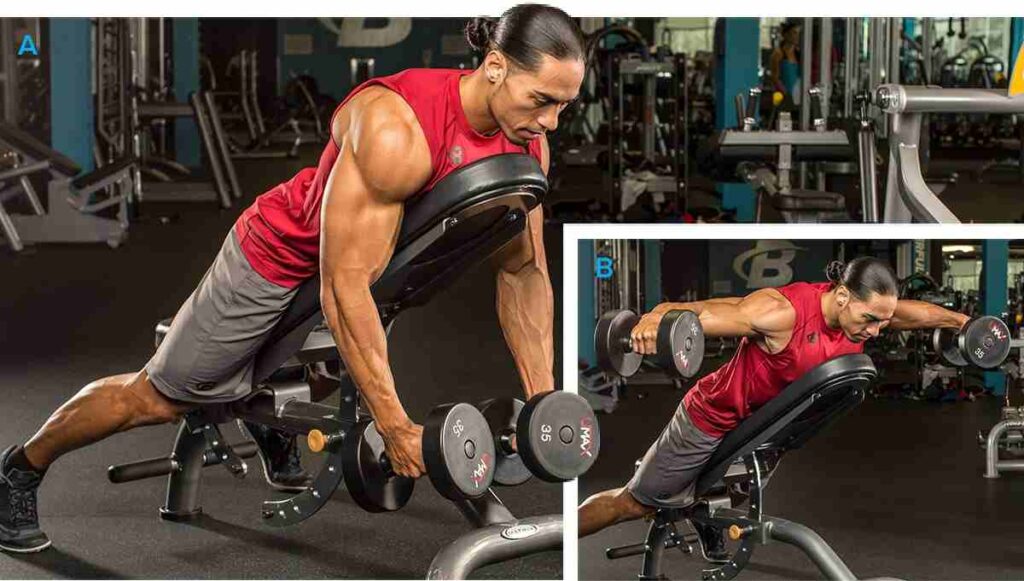Imagine standing at the edge of a cliff, your shoulders broad and strong, facing the horizon. This image of strength and confidence is often associated with wide, well-defined shoulders. But what makes shoulders wide? Is it just genetics, or can targeted exercise play a role? This is where the rear deltoids, or ‘rear delts’, come into the picture.
Tucked away at the back of our shoulders, these muscles are often overlooked, yet they hold the key to enhancing shoulder width and achieving that sought-after V-shaped silhouette. In this article, we will unravel the mystery of the rear delts, exploring their anatomy, function, and the impact of specific training on shoulder width. Whether you’re a fitness novice or a seasoned gym-goer, this comprehensive guide will provide valuable insights into the science of muscle growth and the art of sculpting wider shoulders.
Introduction to Shoulder Anatomy
The shoulder is a complex structure that is made up of several key components:
- Bones: The shoulder is composed of three main bones: the scapula (shoulder blade), the humerus (upper arm bone), and the clavicle (collarbone).
- Joints: There are two primary joints in the shoulder. The acromioclavicular joint is where the acromion (part of the shoulder blade) and the collarbone meet. The glenohumeral joint is where the ball (humeral head) and the socket (the glenoid) meet. There’s also a “floating joint” known as the Scapulothoracic (ST) joint.
- Muscles and Ligaments: The shoulder has a vast network of muscles and ligaments that provide movement and stability. The deltoid muscle, which covers the shoulder, is particularly important and is composed of three sections: anterior (front), lateral (middle), and posterior (rear).
- Joint Capsule: This is a bag-like structure that surrounds each joint, providing additional stability.
- Bursae: These are sac-like structures containing a small amount of synovial fluid. They function to decrease friction between tendons, bone, and skin during movement.
SHOP FOR THE ADJUSTABLE DUMBBELL SET ON AMAZON
Remember, the shoulder’s design allows for a large range of motion, but this can also make it prone to injury.
Role of Rear Deltoids
The rear deltoids, also known as the posterior deltoids, are located at the back of your shoulders. They play a significant role in various movements and functions of the arm:
- Shoulder Extension: The rear deltoids are involved in moving the upper arm down to the rear.
- Transverse Extension: This is the movement of the arm away from the chest with the elbows out to the sides.
- Transverse Abduction: This involves moving the arm away from the chest with the elbows down.
- External Rotation: The rear deltoids contribute to turning the upper arm outward.
- Stabilization: The rear deltoids help stabilize the shoulder joint, which is particularly important when lifting the arm or carrying weight with your arms at your side.
How do I Train Back in CrossFit?
In addition to these movements, the rear deltoids also contribute to the overall shape and appearance of the shoulders. They are an essential part of a balanced shoulder workout, and their development can enhance the overall strength and functionality of the shoulder.
Some examples of activities that involve the rear deltoids are:
- Pitching a baseball or throwing a javelin.
- Pulling a rope or doing a pull-up.
- Rowing a boat or doing a bent-over row.
- Shrugging the shoulders or doing a rear delt raise.
Importance of Balanced Shoulder Development
Balanced shoulder development is crucial for several reasons:
- Aesthetics: Well-developed shoulders contribute to a more balanced and visually pleasing physique. They can make your upper body look broader and more defined, contributing to an attractive hourglass shape.
- Functionality: The shoulder muscles, including the deltoids, are continuously at work in our everyday lives, providing us with the mobility and strength we sometimes take for granted. You use your shoulder muscles not just when you’re weight training, but every time you reach to grab something on a high shelf, wash windows, sweep the floor, garden, paint walls or do several everyday activities.
- Injury Prevention: Balanced shoulder development can help prevent muscle imbalances such as shoulder impingement, rotator cuff strains, and instability, possibly leading to overuse injuries. The shoulder’s support network, the conglomeration of tendons, ligaments, and rotator cuff muscles, serve as a scaffold to reinforce and protect the shoulder from injury.
- Strength Gains: Strong shoulders will enable you to lift heavier weights and complete more repetitions, increasing your overall strength.
- Posture Improvement: Strong and balanced shoulders can lead to improved posture.
SHOP FOR THE RESISTANCE BAND ON AMAZON
Remember, the shoulder joint is the most mobile joint in your body, but this immense range of motion comes at a price – decreased stability. Therefore, balanced shoulder development is not just about aesthetics, but also about maintaining a healthy and functional body.
Does the Rear Delt Make Your Shoulders Wider?
Yes, the development of the rear deltoids, also known as the posterior head of the deltoid muscles, can significantly contribute to the appearance of wider shoulders. Here’s how:
- Appearance: Well-developed rear deltoids contribute to a balanced and aesthetically pleasing upper body. They add width to your shoulders, creating a V-taper that can make your waistline appear narrower.
- Posture: The rear deltoids play a key role in maintaining an upright posture. Strengthening the upper back and shoulders through focused exercises leads to enhanced postural alignment, reducing slouching and rounded shoulders commonly associated with poor posture.
- Physique: A well-developed set of rear deltoids gives the body a thicker look that suggests strength. They are visible both from the side and back of your body, which makes them a key muscle to develop if you’re looking to build an imposing physique.
- Stabilization: The rear deltoids are vital in stabilizing the shoulders for various activities, including bodybuilding and powerlifting. They support the bar on your shoulders when squatting and can be a factor when you’re pulling on the deadlift platform.
SHOP FOR THE WORKOUT BENCH ON AMAZON
Remember, while the development of the rear deltoids can contribute to the appearance of wider shoulders, genetics also play a significant role in determining the natural width of your shoulders. However, a well-rounded shoulder workout that includes exercises targeting the rear deltoids can help enhance your shoulder width and overall upper body aesthetics.
Exercises for Rear Deltoids
Some of the best exercises for rear deltoids are:
Single-Arm Bent-Over Row
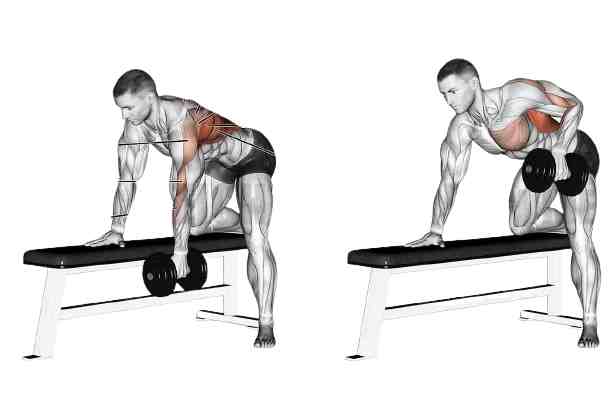
- How to do it: Place your left knee and left hand on a bench. Extend your right leg slightly behind you for support. Hold a dumbbell in your right hand, with your arm reaching down toward the floor. Bend your right elbow, pulling it up and back so your upper arm is roughly in line with your lower chest. Lower the weight with control.
- Targeted Muscles: Rear deltoids, back, biceps, transverse abdominals.
- Sets & Reps: 3 sets of 10-12 reps per side.
Standing Bent-Over Lateral Raise
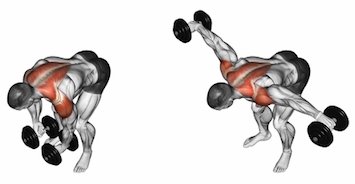
- How to do it: Stand with your legs shoulder-width apart, holding a dumbbell in each hand. Bend your knees slightly and lean forward from your hips. With a slight bend in your elbows, raise your arms out to the sides until they’re level with your shoulders. Lower the weights with control.
- Targeted Muscles: Rear deltoids.
- Sets & Reps: 3 sets of 10-12 reps.
Incline Dumbbell Y-Raises
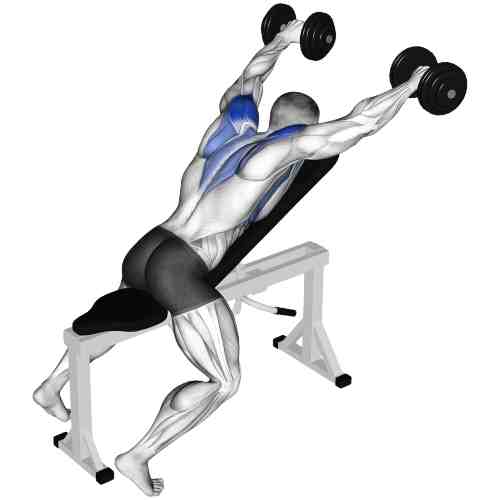
- How to do it: Lie on your front on a bench inclined at around 45-degrees. Hold the dumbbells directly beneath your shoulders. Slowly raise the dumbbells until they are over your head in a Y-shape. After a brief pause, return the dumbbells down to the starting position.
- Targeted Muscles: Rear deltoids, forearms, chest muscles.
- Sets & Reps: 2-3 sets of 10-12 reps.
Standing Reverse Cable Flyes

- How to do it: Stand between two cables on the cable machine with the pulleys set at the top position. Take the pulley grip from the left cable in your right hand and the grip from the right cable in your left hand, pulling them across one another so the cables form a cross in front of your chest. Pull the handles outwards until your arms are nearly outstretched. Slowly return the cables to the central position.
- Targeted Muscles: Rear deltoids, rhomboids, trapezius.
- Sets & Reps: 3 sets of 10-12 reps.
Seated Rear Delt Row
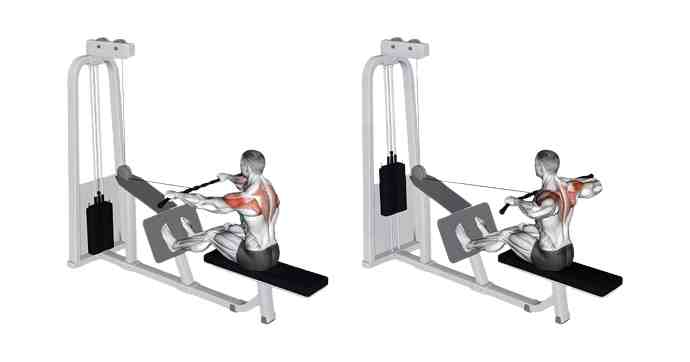
- How to do it: Sit on a rowing machine with your feet on the platform and your knees slightly bent. Hold the handles with your palms facing each other. Pull the handles towards your body, squeezing your shoulder blades together. Slowly extend your arms to return to the starting position.
- Targeted Muscles: Rear deltoids, middle back.
- Sets & Reps: 3 sets of 10-12 reps.
Abduction Row
- How to do it: Stand with your feet shoulder-width apart. Hold a dumbbell in each hand with your palms facing each other. Bend your knees slightly and lean forward from your hips. Pull the dumbbells up towards your chest, keeping your elbows out to the sides. Lower the weights with control.
- Targeted Muscles: Rear deltoids, middle back.
- Sets & Reps: 3 sets of 10-12 reps.
Face Pulls
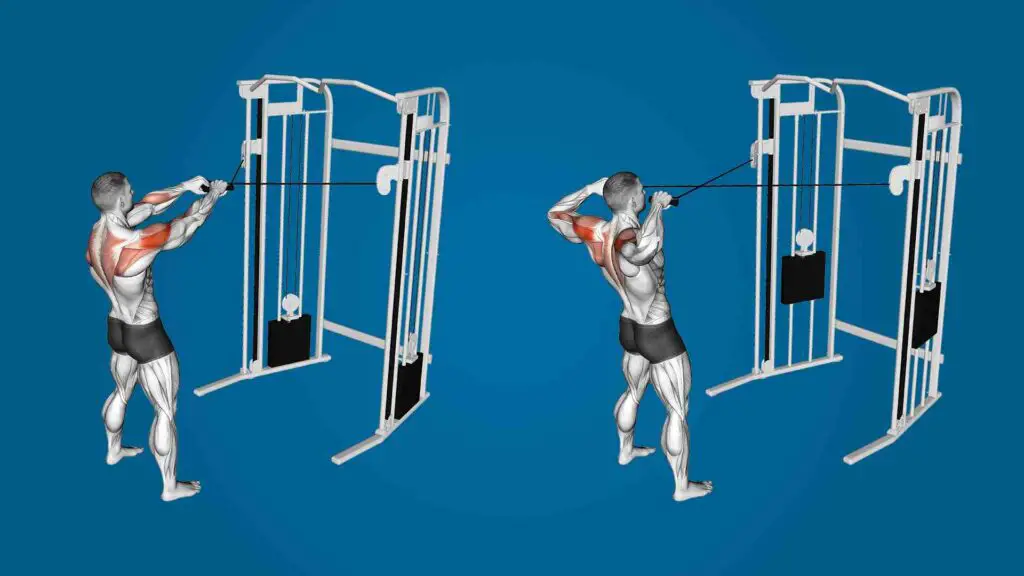
- How to do it: Stand in front of a cable machine with the rope attachment at chest height. Grab the ends of the rope with an overhand grip. Pull the rope towards your face, separating your hands as you do so. Slowly extend your arms to return to the starting position.
- Targeted Muscles: Rear deltoids, upper back.
- Sets & Reps: 3 sets of 10-12 reps.
SHOP FOR THE WORKOUT SUPPLEMENTS ON AMAZON
Remember to always warm up before starting your workout and cool down afterwards. It’s also important to maintain proper form throughout each exercise to prevent injury.
Common Mistakes and Tips
Here are some common mistakes people often make when training their rear deltoids, along with tips on how to avoid them:
- Overemphasizing Anterior Delts: Many people neglect the rear deltoid, leading to a disproportionate shoulder. It’s important to balance your workout routine to include exercises that target all parts of the deltoid muscle.
- Poor Form: Incorrect technique can shift the focus away from the rear deltoid, engaging other muscles instead. Always ensure you’re performing each exercise correctly. If you’re unsure, consider hiring a personal trainer or seeking advice from a fitness professional.
- Rushing the Movements: Slow, controlled motions ensure maximum muscle engagement and reduce injury risk. Don’t rush through your exercises; take your time to feel each movement and ensure you’re using the correct form.
- Overtraining: Training the deltoids too frequently without adequate rest can lead to overuse injuries. Ensure you’re allowing enough recovery time between sessions.
Remember, it’s always a good idea to consult a trusted medical professional before starting a new training regimen.
FAQs
Q 1. What is the role of genetics in shoulder width?
Ans. Genetics plays a significant role in determining the width of your shoulders. The length of your clavicle and the breadth of your shoulder blades, which are determined by your genes, contribute to your shoulder width.
Q 2. What is the impact of nutrition on the development of rear deltoids?
Ans. Adequate nutrition is crucial for muscle development and recovery. Consuming a balanced diet rich in protein, healthy fats, and complex carbohydrates can support muscle growth and repair.
Q 3. What are some signs of overtraining the rear deltoids?
Ans. Overtraining can lead to symptoms like persistent muscle soreness, decreased performance, increased risk of injuries, and a plateau in progress. It’s important to allow adequate rest and recovery for muscles after workouts.
Q 4. What are some common injuries associated with rear deltoid exercises and how can they be prevented?
Ans. Overuse or improper form during exercises can lead to injuries like strains or tears in the deltoid muscle. Warming up before workouts, using proper form, and allowing adequate rest can help prevent these injuries.
Q 5. How long does it take to see results from rear deltoid exercises?
Ans. Visible muscle growth varies among individuals due to factors like genetics, consistency, and training intensity. Generally, 8–12 weeks of consistent deltoid exercise can result in noticeable improvements.
Q 6. What are some modifications for rear deltoid exercises for beginners or those with limited mobility?
Ans. Beginners or those with limited mobility can start with lighter weights and simpler exercises. As strength and mobility improve, they can gradually increase the intensity and complexity of the exercises.
Conclusion
In conclusion, the rear deltoids play a significant role in the overall appearance and functionality of the shoulders. Developing the rear deltoids can contribute to the illusion of wider shoulders, enhancing your physique’s aesthetics.
However, it’s important to remember that balanced shoulder development, which includes all three heads of the deltoid muscle, is crucial for maintaining shoulder health and preventing injuries. Incorporating a variety of exercises that target the rear deltoids into your workout routine can help you achieve your fitness goals. Always remember to use proper form and technique to maximize muscle engagement and reduce the risk of injury.

Good day, and welcome to Fitthour. My name is Shubham Vijay, and I am a certified personal trainer and nutrition coach with 6 years of experience in the fitness industry. At Fitthour, we specialize in types of training, such as strength training, cardio, or HIIT, and our mission is to help clients achieve their fitness goals and improve their overall health.

